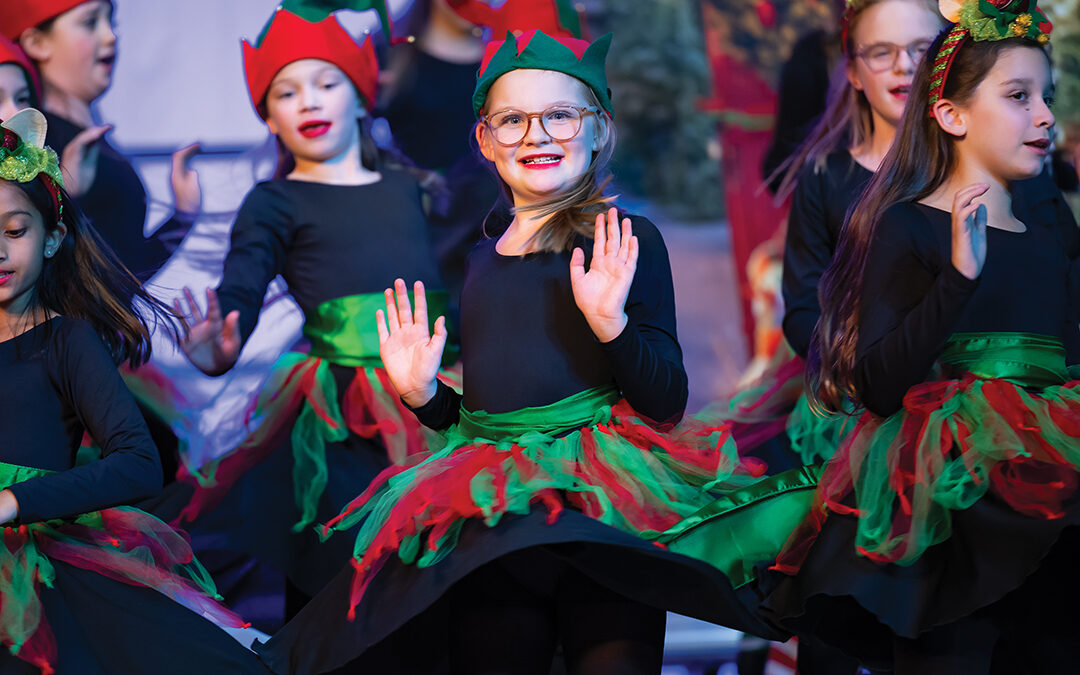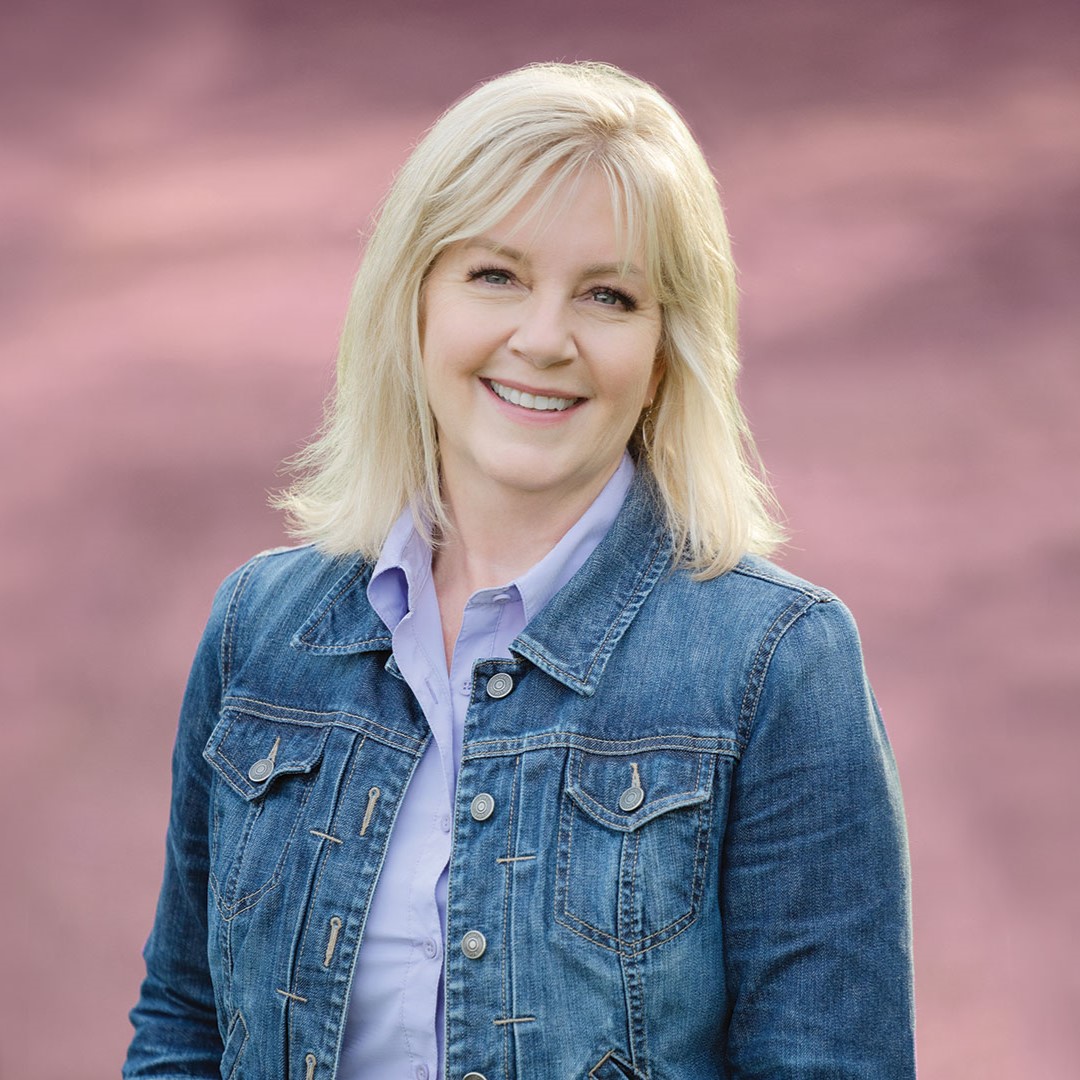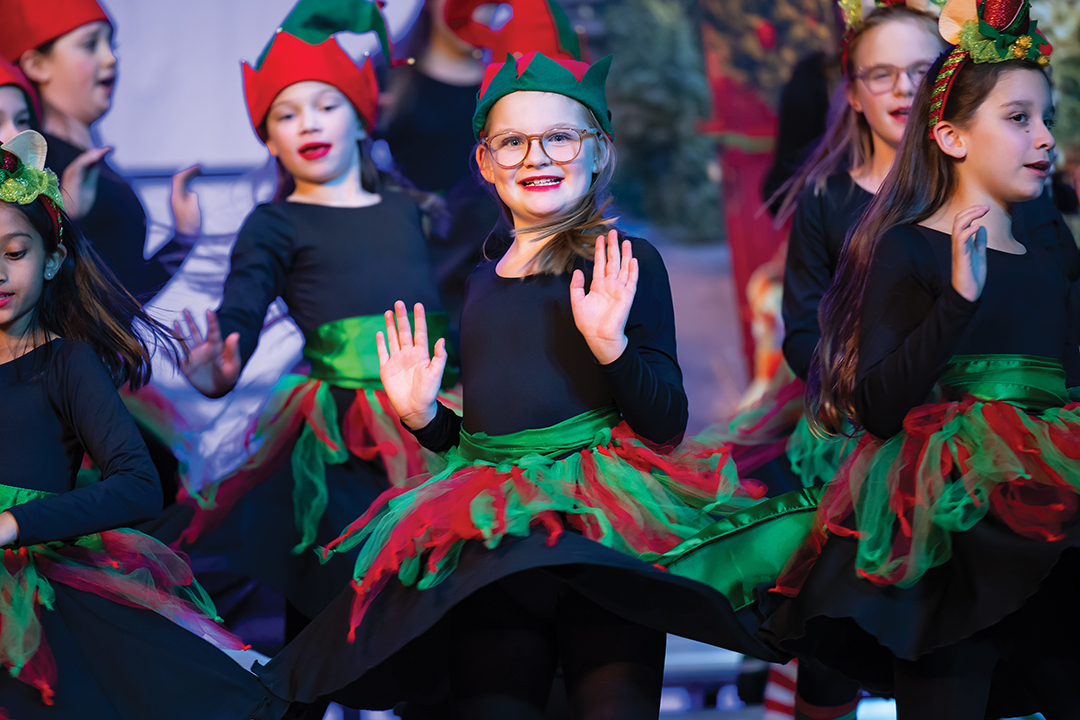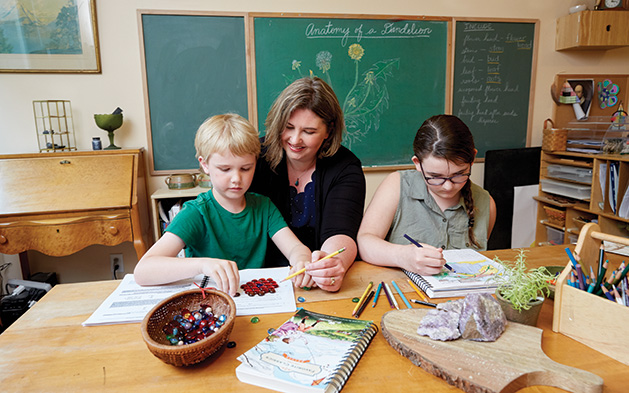
Amy Marotz homeschools her children and two other children in her micro-school. Photos: Tate Carlson
Homeschooling isn’t for everyone, but these Woodbury families are proving that a homeschool life can be a wild success—and full of joy.
What are some things you picture when you think about homeschool? Like most American parents, Woodbury families who homeschool their children are well aware of the myths and stigmas around educating kids at home—including the stereotype of unsocialized and eccentric kids—but their own successes, academic and otherwise, are proof that a homeschool lifestyle is a great fit for families of all shapes and sizes. We talked with three Woodbury moms about why they made the decision to homeschool their children, and what they’ve learned along the way. And what we found is rooted in common sense: When parents work closely alongside their children, as a team, growth and development happen in a way that’s natural and often pretty darn fun.
While certainly not all homeschool families have a religious focus, the Woodbury parents we spoke with all have something in common: They want their children to be schooled in a primarily Christian environment while also receiving a top-notch education. These families incorporate religion into their school days in various ways, from attending daily mass to writing in gratitude journals to praying together. This spiritual aspect of their school life works alongside their regular lessons, which include solving math problems, reading books and performing science experiments.
Sarah Gibson, a Woodbury mom of five, began homeschooling her children after she realized that all of the private schools she was exploring were prohibitively expensive. So she decided to take matters into her own hands and build a curriculum herself to better align with her goals for her children.
“I have taught in the public school system as well, and believe that a Catholic school education aligns with our values, whereas the public school system often does not,” Gibson says.
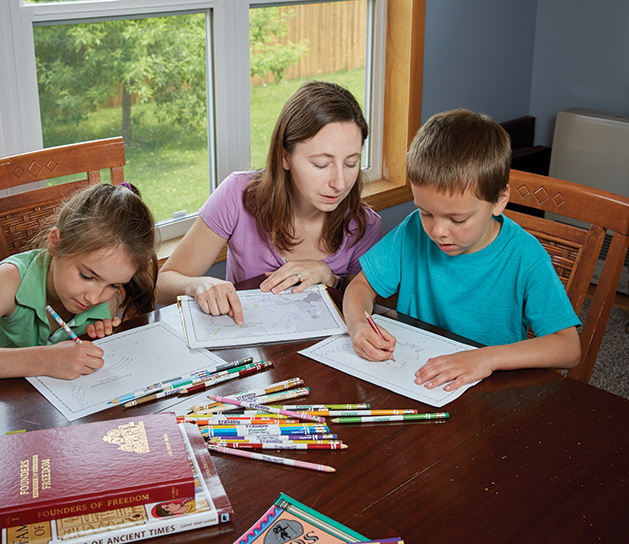
Sarah Gibson is able to incorporate her family’s religious life into their homeschool day.
Amy Marotz, a mom of two, who has her master’s degree in education and was a founder at Minneapolis Academy and an art teacher in a summer program at St. Paul Academy, felt more than qualified to become a homeschool teacher. After touring a local public school, Marotz found herself disappointed with the amount of screen time encouraged there, and the extreme focus on performance, rather than allowing children freedom to explore. So she began teaching her daughter and son, and a couple of other local kids, in what she calls her “micro-school.”
“I took the steps necessary to form a nonpublic school with the state of Minnesota,” Marotz says.
Marotz’s micro-school is simply an extension of homeschooling her own children. She teaches a few other students every week alongside her own two children. Their parents pay a weekly tuition, which ends up being around $5 an hour, plus some extra expenses for field trips. This arrangement solves a conundrum many families face: when parents’ desire to homeschool clashes with their own work schedules, personalities, or their perceived “inability” to teach.
Kim Wilson, a mom currently homeschooling two of her children in high school and one in elementary school, mentions the unique experiences that come with homeschooling teenagers. In addition to academics, she is helping her kids find extracurricular activities and start college applications. She began homeschooling her daughter in 2006, and quickly decided to keep all of her children at home to learn.
“Today, homeschooling is our first choice. We enjoy spending time together learning and being able to weave our Christian faith and values in with their daily subjects,” Wilson says.
Wilson says, when working with elementary school students, there is more freedom and room to study interests, but as children enter into middle and high school, they generally need more structured learning so they can prepare for college and adult life.
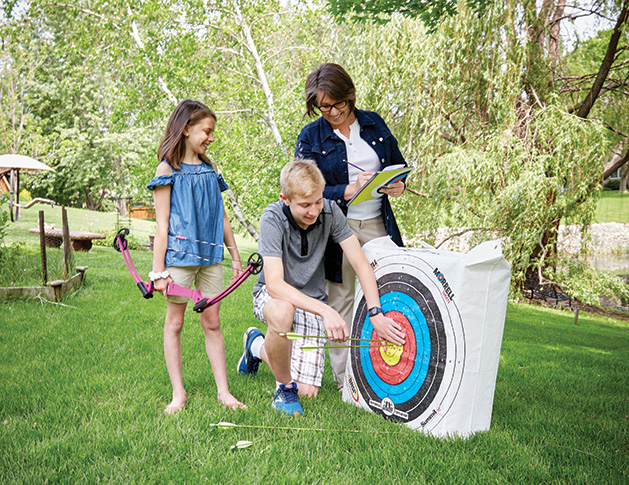
Kim Wilson’s kids learn by experiencing unique activities like archery.
So what does a typical homeschool day look like for these families? For Gibson, it includes waking the kids up around 7 a.m. and attending a morning mass at their church. Then they have the mornings to play and do chores. In the afternoon, while the two youngest take naps, the three other children—a preschooler, kindergartner and second-grader—do their work in math, reading and spelling. Then they all do lessons together on science and history. Gibson uses a combination of self-paced workbooks, and field trips and activities designed to help them think more creatively and independently.
“With the core subjects (reading, writing and arithmetic), I take somewhat of a traditional approach to help them learn the facts. With other subjects, like science and history, I take a classical approach to develop their thinking skills and raise self-learners,” Gibson says.
For Marotz, four out of the five days during the week are what she calls more traditional school days, where they spend time in the formal classroom setting she has created in a downstairs space in their home. They begin with math lessons, which are completed with two different materials: a student-led math workbook, and a series called Life of Fred, which weaves lessons in with stories and exploratory questions. Lessons on history subjects, like the Vikings and the American Civil War, are done in a group. Their language arts lessons include reading literature (a favorite is Mark Twain’s Tom Sawyer) and completing creative writing projects. They have lunch together, all taking turns with cooking and setting the table, and then get time outside for recess. They often study Spanish through the MUZZY curriculum, and also Latin or STEM projects, which they finish around 1 p.m. In the afternoon, the children have time to pursue passion projects. Having regular, structured days are crucial, but Marotz and her students still manage to have plenty of fun outside of the house. “One day a week, we have an ‘adventure day’ where we visit local parks, museums, theaters, zoos, etc.,” Marotz says.
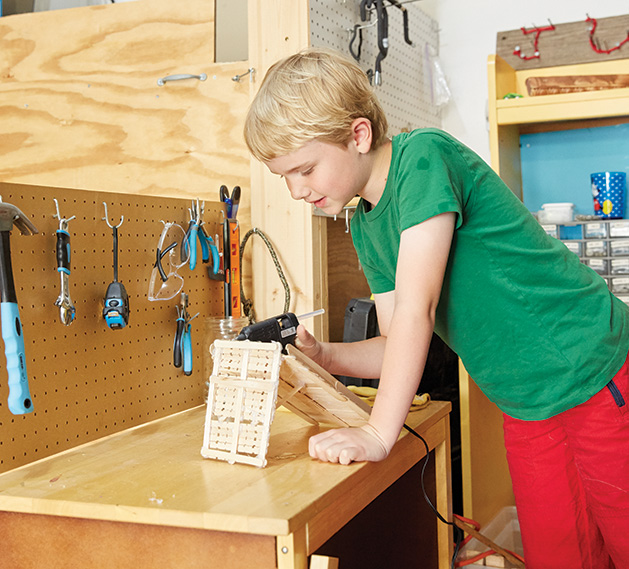
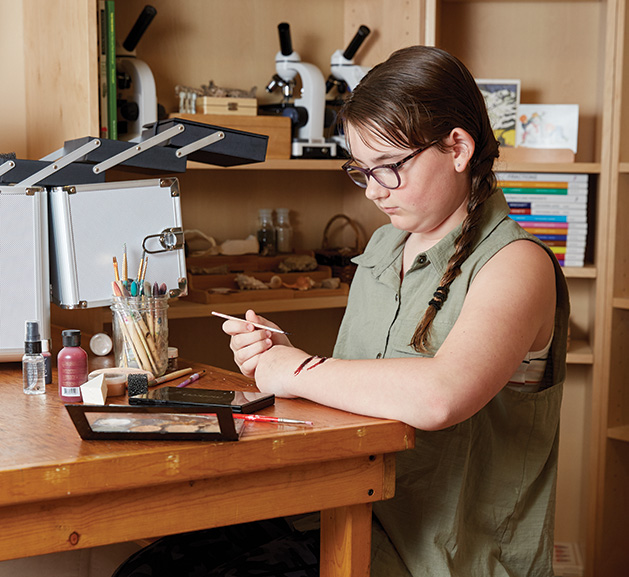
Amy Marotz’s son and daughter have time each day for passion projects.
Wilson used to schedule her days much like the other two families, but now that she has two children in high school, their days are looking quite different. One of her sons is involved in PSEO (postsecondary enrollment options) so he is already busy working on college courses. Her other son is a freshman, so he’s started what Wilson calls independent studying. He turns in assignments and papers and does most of his work alone.
So—what do the kids think? The students of these homeschool families express lots of positivity about the experience. They mention the freedom, adventure and independence that homeschooling affords them in their day-to-day lives.
When asked about their favorite parts about getting to learn at home, Gibson’s kids respond enthusiastically. “My 7-year-old daughter says her favorite part is reading the history books,” Gibson says. “Our history curriculum isn’t textbook-based, so the books are much more interesting than the reading I remember doing in history as a kid.”
Marotz’s kids enjoy some other special parts about being homeschooled. “My daughter, Alex, says her favorite part is getting to know the other students so well. They really are like family. She also loves writing and directing films during history class. My son, Justin, says he loves being able to write with a quill and being able to have a snack whenever he wants,” Marotz says.
“I have found that often homeschooled kids are better around younger kids with looking out for them and interacting with them, than their brick-and-mortar-schooled peers. They know how to interact with adults in various roles properly and politely,” Gibson says.
And these parents encourage their children to be involved in other activities outside of the house.
“Socializing is about interacting with other people. My kids have been involved at their church with Sunday school, confirmation, mission trips and volunteering. My kids have also been very involved in the Woodbury Athletic Association and at Woodbury High School in baseball, soccer, football, track, basketball, archery, cross country and gymnastics,” Wilson says.
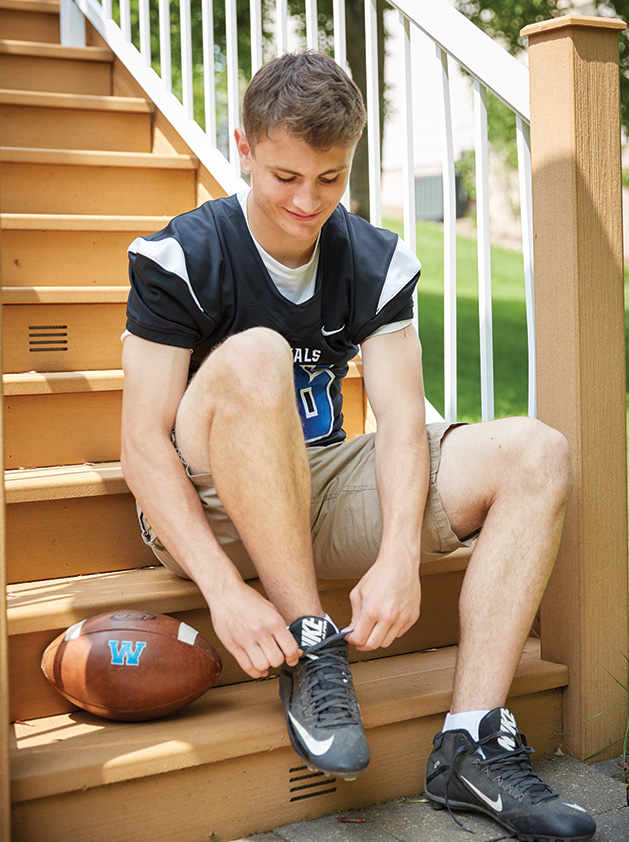
Kim Wilson’s high school-aged son participates in football and other activities with traditionally schooled teens.
One perk all of the moms can agree on is the ability to tailor lessons and school days directly to their students, while also having the time to travel.
Since homeschool learning can (mostly) be done from anywhere and everywhere, all of the families take vacations and go on trips to learn by seeing, doing and experiencing, instead of simply reading facts from a book every day. They visit landmarks, museums and important historical places.
Gibson’s family traveled to Texas during a Minnesota winter; Marotz and her kids went river rafting in New Mexico after their unit on the hydrosphere; and Wilson’s family even had the chance to meet President Jimmy Carter.
For families who are interested in exploring the homeschool alternative education journey with their kids, Gibson, Wilson and Marotz say there are plenty of great resources locally.
One of the ways Wilson made connections and answered questions was by participating in the MACHE state homeschooling convention. There, parents and kids have the opportunity to meet other homeschooling families, compare curriculum options and gain advice from veteran homeschoolers. There are also numerous co-ops in the Woodbury, St. Paul and Oakdale areas. Woodbury High School is extremely supportive of homeschooling families and allows children to participate in activities like sports, theater and other clubs. Outside of public school activities, the moms also find it useful to join groups with other families. Gibson created what she calls a Tour of Parks, where homeschooling families get together in various Woodbury parks during the summer. Another resource Marotz recommends for finding activities with other homeschooling families is Homeschool Adventures, which allows teachers and students to attend local events and classes.
All three moms agree that with the increasing prevalence of social media, they can connect with other homeschooling families with ease.



